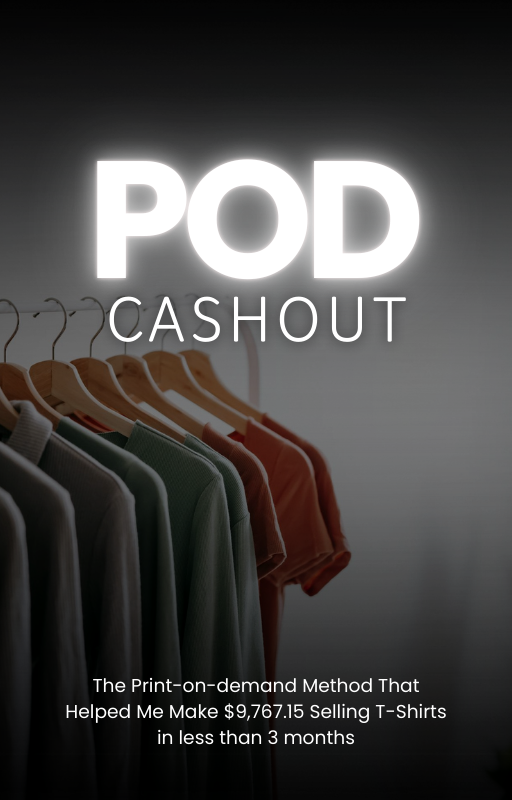Making money with your side hustle? Love that for you. There’s nothing like seeing a payment hit your account and feeling like, “Yup, I’m building something.” That little rush? Totally legit. But let’s be real for a sec—what separates someone who turns their hustle into a full-blown money machine from someone who’s just spinning their wheels? It’s not just about earning. It’s about tracking where the money goes.
You’ve probably heard that old line, “If you don’t measure it, you can’t manage it.” Sounds basic, but it hits hard when it comes to money. Even if your hustle’s pulling in cash, if it’s flying right back out just as fast, what’s really the point? You’ve got to know exactly where every dollar is landing—and how much of it you’re keeping.
Here’s where a lot of folks go sideways: they think they’re good because they see money coming in. They don’t actually peek at what’s going out. Those little charges that seem harmless—$5 on a random app, $12.99 for a monthly subscription you forgot existed—can quietly wreck your profits. The biggest trap? Spending more than you earn. Obvious, yeah. But common? Absolutely.
And this isn’t about going full accountant mode. You don’t need fancy tools. A simple spreadsheet, your phone’s notes app, or a free budgeting app can do the trick. The only non-negotiable is this: write down everything. Bought coffee for a client meeting? Track it. Paid for Canva Pro? Track it. Signed up for a $3 trial that turned into $20 a month? Oh yeah, definitely track that.
If your side hustle money barely covers your bills—or worse, you’re constantly wondering where it went—tracking becomes a survival tool. Think of it like getting a money x-ray. You can’t fix what you can’t see, and once you start seeing those leaks, you can patch them before they flood your whole setup.
Here’s another thing people overlook: your hustle cash isn’t floating in a separate universe. It’s tangled up with your regular life stuff—rent, phone bill, groceries, whatever. So when you pull everything into one view—your hustle income and your personal expenses—you get the full picture. You’ll see exactly how your side gig is impacting your life financially. That’s the kind of clarity that lets you make moves with confidence.
Now we gotta talk about the “B” word: budgeting. I know, I know—it sounds dry and stressful. But hear me out. A budget isn’t some fun-killer. It’s just a plan for your money. That’s it. It’s you being in charge, deciding where your cash goes instead of wondering why it vanished by the 20th of the month.
When you create a budget for your hustle, you’re saying, “Here’s what I care about.” Whether that’s saving up for gear, reinvesting in ads, or just putting a little aside for taxes, your budget shows your priorities in real-time. Every dollar should be doing something on purpose. And if something doesn’t make the cut? No shame—cut it loose.
And while we’re at it, let’s talk about surprise costs. Because they’ll hit you when you least expect it. Your laptop dies. You need a rush delivery for a client. Something breaks. If you don’t have a little emergency stash, that can throw everything off. Doesn’t need to be massive—just enough to keep you from panicking. If you dip into it? Refill it. Keep that safety net strong.
Also, budgeting is a skill. Don’t expect to nail it on the first try. Side hustle income can be all over the place, especially early on. You might forget about certain monthly tools or overspend on ads one month. It’s all good. You’re learning. It’s kind of like tweaking a recipe—you adjust as you go until it tastes just right.
Now let’s talk about stretching your cash. One of the smartest moves when you’re just starting is doing more yourself. It’s like cooking at home instead of eating out. For example, this guy turned a photo printer into a $100K side hustle, and you better believe he wasn’t hiring help in the beginning. He learned the ropes first, then scaled.
Same goes for admin stuff, basic graphic design, or handling your own customer emails. Sure, eventually you can hire a VA or a designer. But early on? Learn the basics. Your time is an asset. Use it wisely before you start throwing money at problems.
And while we’re cleaning up—go scrub your digital fridge. Look through your subscriptions, courses you never opened, and tools collecting dust. Are you actually using that $25/month tool? No? Cancel it. Every unused subscription is money you could’ve spent on something useful. Be ruthless.
Want to be even smarter? Shop around. Look for free tools or discount deals. A lot of platforms offer cheaper rates for freelancers or small biz owners. Don’t jump on the flashiest option right away. Research. Compare. Think long game.
And if things get a little chaotic financially, don’t be afraid to freeze spending for a minute. Hit pause on everything non-essential. Focus only on what your side hustle needs to function. It’s like rebooting your budget. Once things settle, you can bring back the extras—just with more intention.
Before you make any purchase—whether it’s a new mic, course, or software—make a list of what you actually need. Then stick to that list. Don’t get pulled into shiny new tools just because they look cool. That “just in case” spending adds up.
Also, it helps to regularly ask: “Is my hustle actually profitable?” If you’re making less than you’re spending, it’s time to shift gears. You either need to cut costs or find ways to boost income. And if you need inspo, check out these Gen Z-friendly side hustles or how someone made $21K doing different gigs. There are plenty of ways to level up.
It all boils down to one truth: tracking your money might not be the most glamorous part of your side hustle, but it’s the one that sets you up for real success. When you know where your dollars go, when you stay on top of your budget, and when you get intentional about spending, you’re not just playing the game—you’re learning how to win it.
And if you’re wondering what a really solid budgeting mindset looks like, it’s honestly pretty close to zero-based budgeting, where every dollar has a job. Even if you don’t go all-in on that method, the idea of assigning purpose to your money? That part sticks.
So don’t wait for the “perfect” time. You don’t need to be an expert. You don’t need to have all the tools. You just need to start. Open your notes app, fire up a spreadsheet, or download a budget tracker. Whatever works for you.
Because you already have the hustle. Now it’s time to make sure your money keeps up with your energy.







